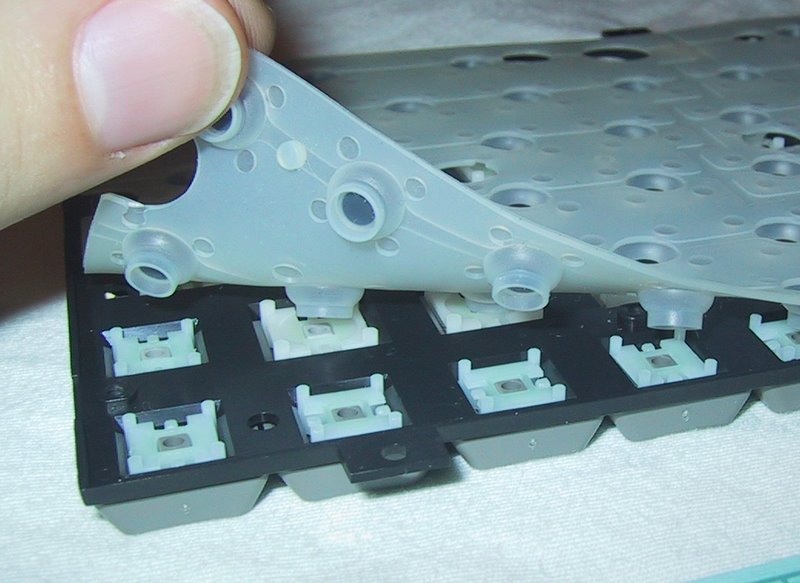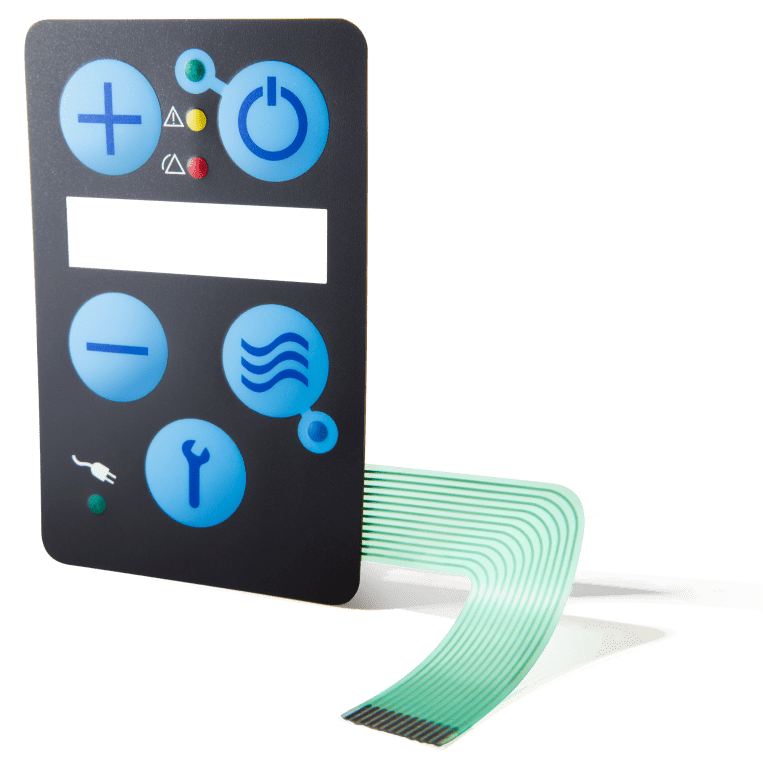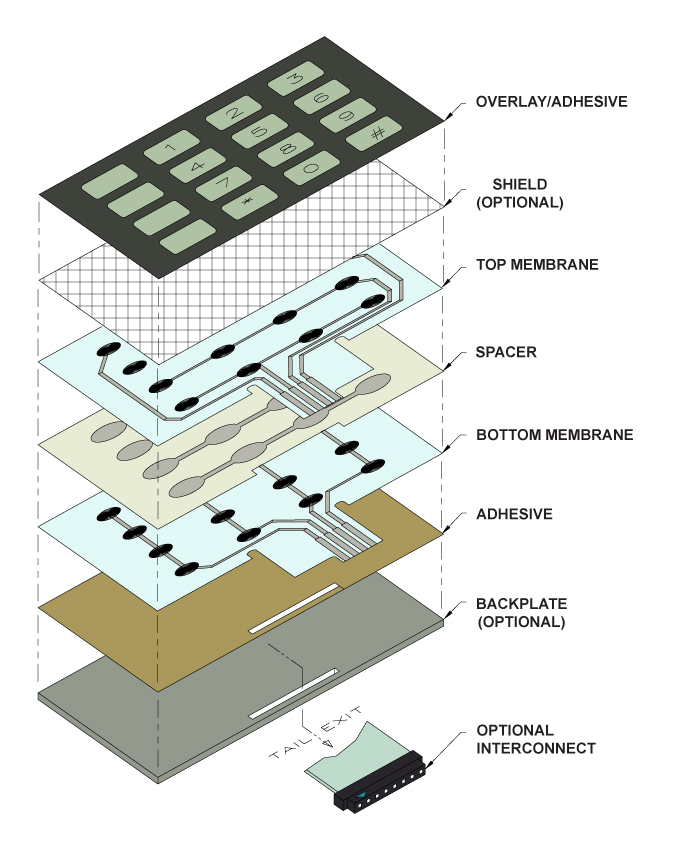Membrane Switches: A Key Component in Custom Control Panels
Membrane Switches: A Key Component in Custom Control Panels
Blog Article
Membrane Layer Switch Modern Technology: The Secret to Reputable and Cost-efficient Interfaces
Membrane layer switch technology has actually become a crucial element in the layout of customer interfaces, offering both reliability and cost-effectiveness across a varied series of applications. Its robust building makes sure resistance to ecological obstacles, while the adaptability in layout enables customized services that meet details sector needs. As we explore the diverse benefits of membrane layer switches, their capacity for innovation raises inquiries about future applications and progressing fads. What does the next chapter hold for this modern technology in an increasingly electronic landscape?
Understanding Membrane Switch Modern Technology
Membrane layer button technology is an extensively used interface solution in numerous digital devices, providing a smooth mix of performance and layout. This innovation includes multiple layers of materials, generally containing a graphic overlay, spacer layer, and a circuit layer. The visuals overlay presents the user interface elements, while the spacer layer separates the circuit layer from the overlay up until a user activates a button.
When pressure is related to the overlay, the circuit layer completes the electrical circuit, sending a signal to the tool. This mechanism permits various configurations, including responsive responses and backlighting choices, boosting user interaction. Membrane switches are typically made utilizing durable materials such as polyester or polycarbonate, making sure longevity and resistance to ecological aspects like wetness and dust.
The adaptability of membrane switches enables their application in diverse industries, including clinical gadgets, consumer electronic devices, and industrial controls. Their portable style allows for combination right into space-constrained atmospheres, offering an effective customer interface without jeopardizing visual allure. Comprehending the details of membrane layer button modern technology is crucial for manufacturers and designers looking for to develop trustworthy and efficient human-machine interfaces.
Key Advantages of Membrane Layer Buttons
While different interface services exist, membrane layer switches offer distinct benefits that make them a preferred selection in many applications. One of the key benefits is their sturdiness; membrane layer switches are made to withstand harsh environmental conditions, consisting of wetness, dust, and temperature level changes, making sure lasting performance. This durability significantly lowers the requirement for regular replacements, therefore lowering overall upkeep prices.

In addition, membrane switches are lightweight and portable, making them suitable for applications where room is restricted. Their low-profile her latest blog layout adds to a smooth look without compromising capability.
Cost-effectiveness is additionally a noteworthy benefit, as the manufacturing procedure for membrane layer switches tends to be less costly contrasted to standard mechanical switches. This affordability, incorporated with their reliability and convenience of installment, settings membrane switches as a useful remedy for a large range of industries looking for efficient and efficient interface.
Applications Across Various Industries
Just how do membrane buttons adjust to the diverse needs of different industries? Membrane switch modern technology is significantly recognized for its convenience, making it suitable for a vast array of applications across multiple sectors.
In consumer electronics, membrane layer buttons provide a compact service for push-button controls and home appliances, boosting individual experience through intuitive layout. In addition, the commercial field leverages membrane switches for equipment control panels, gaining from their resistance to harsh environments, such as wetness and dust.
Military and aerospace applications likewise use membrane buttons for their reliability and capacity to stand up to extreme problems, ensuring operational effectiveness in important situations. Furthermore, the food and beverage industry takes on these switches for automated systems, where hygiene and convenience of procedure are critical. Inevitably, membrane buttons are customized to satisfy the unique needs of each market, showing their essential function in contemporary innovation user interfaces
Design and Personalization Alternatives

In the realm of membrane layer button innovation, style and customization choices play a critical function in enhancing performance and user communication. These buttons can be tailored to satisfy certain operational requirements and aesthetic preferences, making them functional components in different applications.
Among the main modification alternatives is the format of the button itself, which can be made to accommodate special interface and ergonomic considerations. By changing the form, dimension, and arrangement of switches, producers can develop user-friendly designs that promote convenience of usage. In addition, the consolidation of different colors and visuals overlays enables for branding and boosted presence, guaranteeing that users can quickly identify functions.
In addition, membrane buttons can be engineered with various responsive home comments systems, such as raised switches or audible clicks, to boost the user experience. Various materials can additionally be selected for resilience and environmental resistance, addressing variables such as moisture, temperature level changes, and chemical exposure.
Inevitably, the substantial style and modification choices readily available in membrane layer switch modern technology equip services to create customized remedies that not just fulfill functional requirements however also straighten with their branding and functional needs.

Future Trends in Membrane Layer Switches
As membrane switch technology remains to evolve, future fads are significantly concentrated on enhancing customer experience and incorporating innovative performances. One significant fad is the integration of touch-sensitive and capacitive innovations into typical membrane buttons. This development enables more instinctive interface, giving tactile comments while maintaining a smooth design.
Another emerging fad is the use of eco-friendly materials, driven by the expanding need for sustainable manufacturing practices. Producers are seeking to reduce their carbon impact by making use of recyclable substratums and discover this low-impact inks, lining up with worldwide sustainability goals.
Furthermore, the increase of the Web of Things (IoT) is triggering the consolidation of smart features right into membrane layer buttons. Enhanced connection choices will enable tools to connect with each various other, permitting seamless assimilation into broader systems.
Additionally, advancements in printing technologies, such as electronic printing, are enabling for greater layout versatility and customization. This makes it possible for makers to produce elaborate styles and dynamic shades cost-effectively.

Verdict
In final thought, membrane layer switch modern technology stands for an important technology in user interface style, providing substantial benefits in resilience, modification, and cost-effectiveness. As advancements proceed to emerge, especially in touch-sensitive user interfaces and lasting materials, the capacity for membrane layer switches over to enhance individual experience and capability continues to be promising.
Report this page